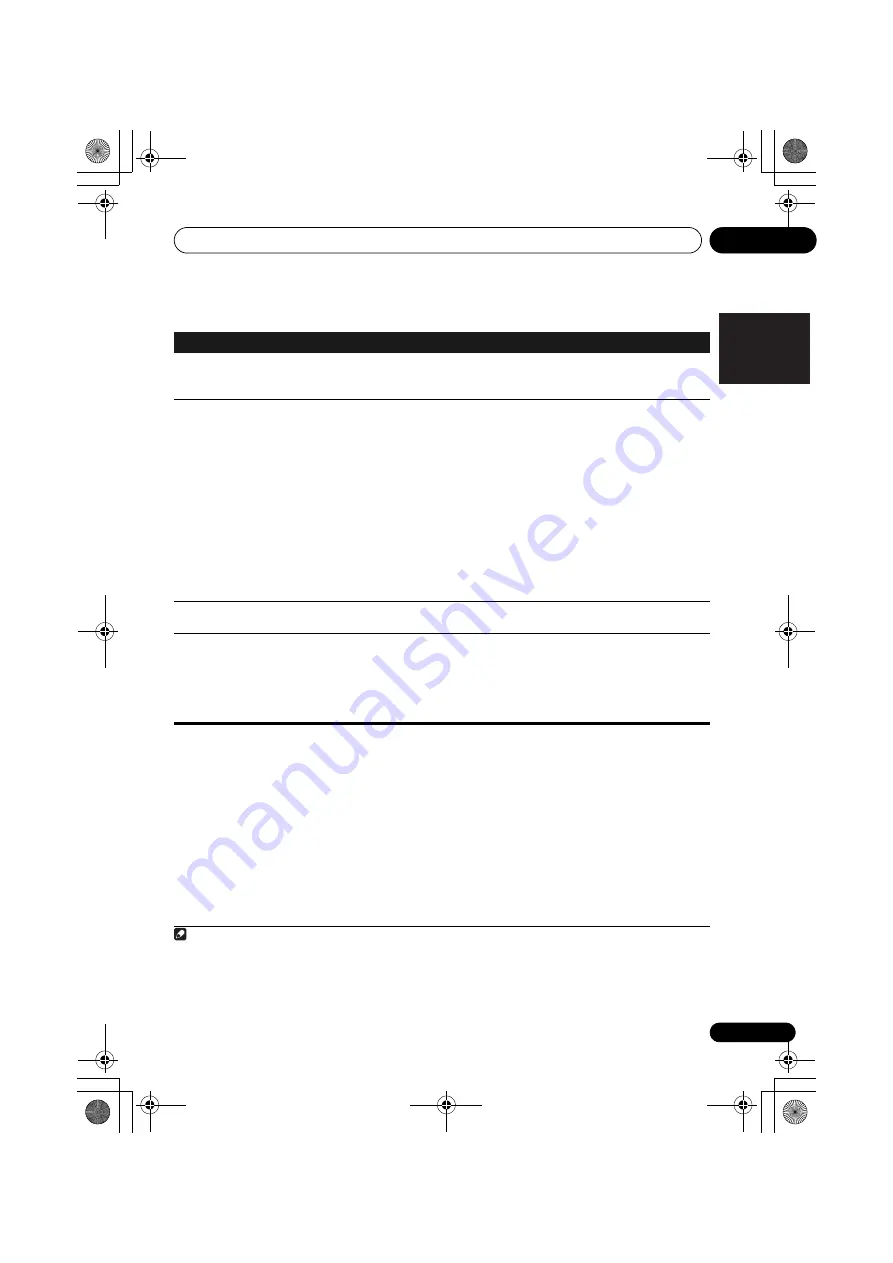
Additional information
10
65
En
English
Deutsch
Italiano
Español
Français
Nederlands
HDMI
Important information regarding
the HDMI connection
There are cases where you may not be able to
route HDMI signals through this system (this
depends on the HDMI equipped component
you are connecting-check with the
manufacturer for HDMI compatibility
information).
If you aren’t receiving HDMI signals properly
through this system (from your component),
please try the following configuration when
connecting up.
Configuration
1
Connect your HDMI-equipped component
directly to the display using an HDMI cable.
Then use the most convenient connection
(digital is recommended) for sending audio to
the system. See the operating instructions for
more on audio connections. Set the display
volume to minimum when using this
configuration.
Symptom
Remedy
No picture or sound.
• If the problem still persists when connecting your HDMI component
directly to your monitor, please consult the component or monitor manual
or contact the manufacturer for support.
No picture.
• Depending in the output settings of the source component, it may be
outputting a video format that can’t be displayed. Change the output settings
of the source, or connect using the composite jack.
• This system is HDCP-compatible. Check that the components you are
connecting are also HDCP-compatible. If they are not, please connect
them using the composite video jack.
• Depending on the connected source component, it’s possible that it will not
work with this system (even if it is HDCP-compatible). In this case, connect
using the composite video jack between source and system.
• If video images do not appear on your TV or flat screen TV, try adjusting
the resolution, DeepColor or other setting for your component.
• To output signals in DeepColor, use an HDMI cable (High Speed HDMI
TM
Cable) to connect this system to a component or TV with the DeepColor
feature.
OSD does not appear.
• The OSD will not appear if you have connected using the HDMI output to your
TV. Use composite connections when setting up the system.
No sound, or sound
suddenly ceases.
• If you’ve made separate connections for audio, make sure you have assigned
the analog/digital jack(s) to the corresponding HDMI input for the component.
• Check the audio output settings of the source component.
• Check that the Audio Parameter setting is set to
HDMI AMP/THRU
(refer
to page 51).
• If the component is a DVI device, use a separate connection for the audio.
Note
1 • If your display only has one HDMI terminal, you can only receive HDMI video from the connected component.
• Depending on the component, audio output may be limited to the number of channels available from the connected
display unit (for example audio output is reduced to 2 channels for a monitor with stereo audio limitations).
• If you want to switch the input source, you’ll have to switch functions on both the system and your display unit.
• Since the sound is muted on the display when using the HDMI connection, you must adjust the volume on the
display every time you switch input sources.
HTP-500_LXCN_En.book 65 ページ 2009年10月1日 木曜日 午後4時58分
















































